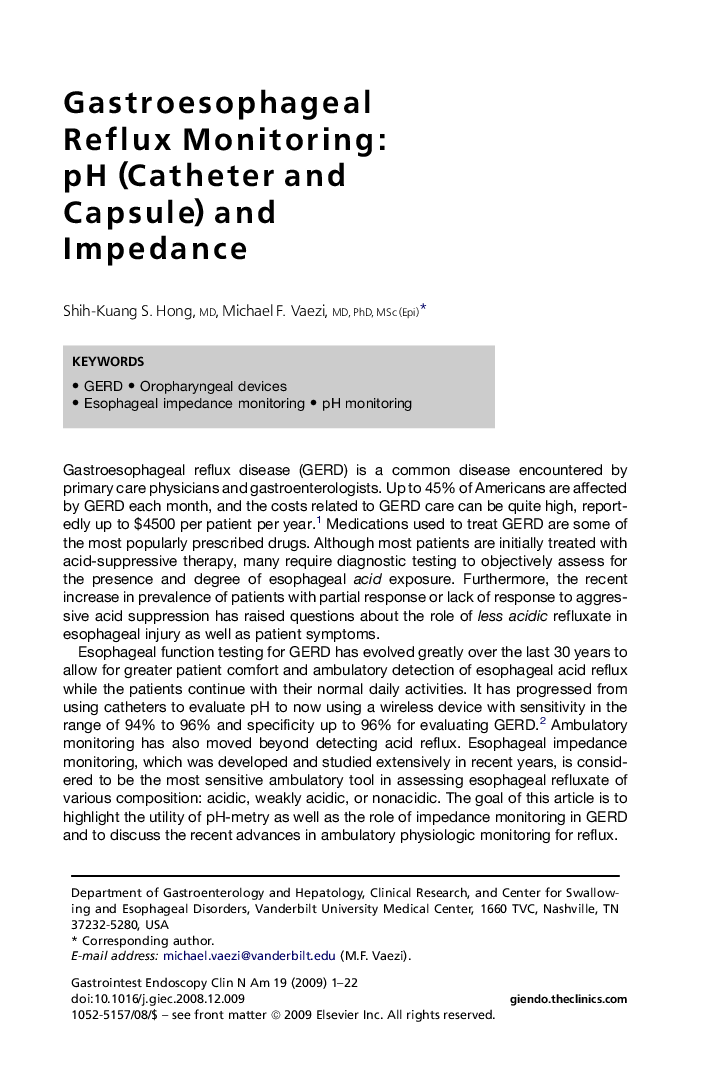| Article ID | Journal | Published Year | Pages | File Type |
|---|---|---|---|---|
| 3310761 | Gastrointestinal Endoscopy Clinics of North America | 2009 | 22 Pages |
Diagnostic testing for GERD has evolved to include multi esophageal sites (distal, proximal and hypopharyngeal monitoring), wireless pH, and oropharyngeal devices. The versatility of the devices has increased our ability to better understand the role of acid reflux in various disorders involving reflux of acid. Wireless pH monitoring improves patient comfort and allows monitoring for gastroesophageal reflux events over several days. Ambulatory MII-pH monitoring is another exciting diagnostic tool, which is capable of detecting more than one type of reflux and achieves higher sensitivity and specificity to detect GERD than endoscopy or pH-metry. It is useful in patients with either typical or atypical reflux symptoms who are refractory to proton pump inhibitor (PPI) therapy. In this setting, MII-pH can be performed on PPI therapy to assess the efficacy of PPIs and the role of nonacid or acid reflux in persistent symptoms.
